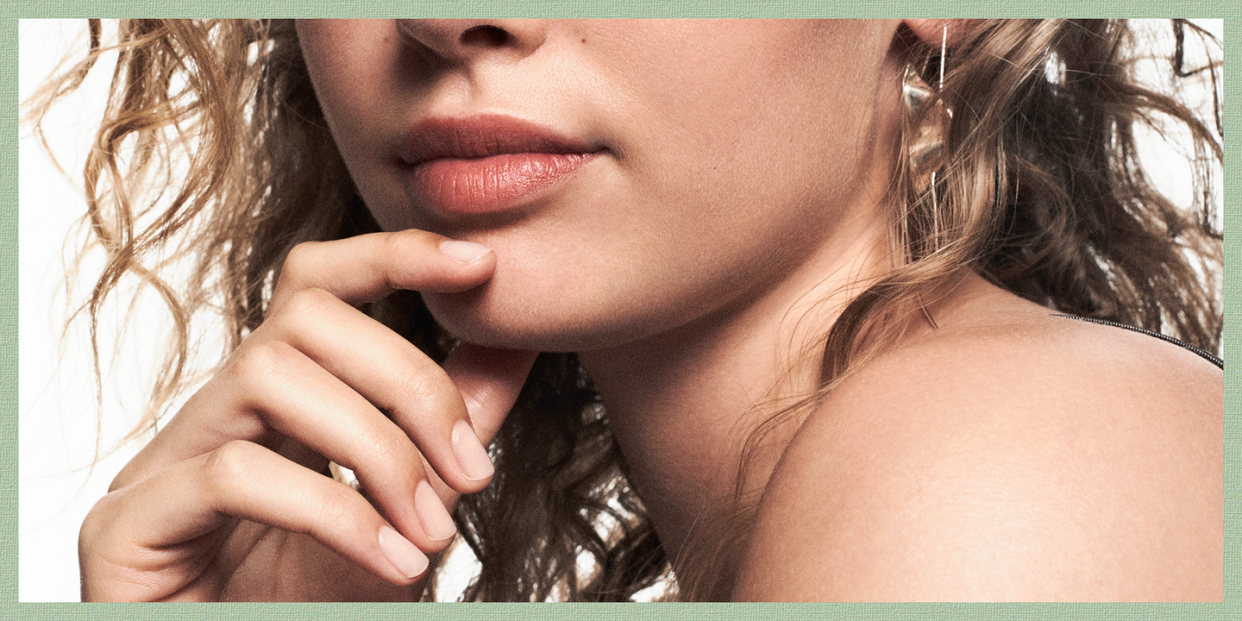What Is Non-Toxic Nail Polish?


You shouldn’t need a Ph.D. in biochemistry to decipher the nail polish industry’s arbitrary nontoxic ingredient code. Nearly all nail polishes available today are considered three-free, meaning they don’t contain the undoubtedly toxic formaldehyde, toluene, and dibutyl phthalate (DBP). But we know that polish ingredients can be absorbed through the nail bed, and we also know that polish smells…pungent. A manicure a week for 50 years can really add up—so here’s the 411 on nontoxic nail polish.
Five-Free
What it doesn’t contain: formaldehyde, toluene, DBP, formaldehyde resin, and camphor.
Why that matters: Formaldehyde resin has not been proven to be carcinogenic like formaldehyde itself, but studies have proven that it’s allergenic. Synthetic camphor is toxic with prolonged and excessive exposure, which puts nail technicians at a higher risk of developing a reaction.
Seven-Free
What it doesn’t contain: formaldehyde, toluene, DBP, formaldehyde resin, camphor, ethyl tosylamide, and xylene.
Why that matters: Ethyl tosylamide is a plasticizer that has been banned from beauty products by the European Commission due to its antibiotic properties and potential contribution to antibiotic resistance (it’s still allowed in the United States). Xylene is a petroleum-based solvent found in paint thinner and nail polish that can cause symptoms like headaches and dizziness with short-term exposure.
Nine-Free
What it doesn’t contain: formaldehyde, toluene, DBP, formaldehyde resin, camphor, ethyl tosylamide, xylene, parabens, and acetone.
Why that matters: Do we really need to go over parabens again? As for acetone, it’s almost never found in nail polish but rather nail polish remover. It’s a common skin, eye, and lung irritant, and has been shown to have both neuro- and respiratory toxicity in animal studies at moderate doses.
10-Free
What it doesn’t contain: DBP, triphenyl phosphate (TPHP), toluene, xylene, ethyl tosylamide, camphor, formaldehyde, formaldehyde resin, parabens, and tert-butyl hydroperoxide (TBHP), and/or gluten. Ten-free formulas are also commonly made without animal-derived ingredients.
Why that matters: TPHP is a suspected endocrine disruptor that has been shown to be easily absorbed into the bloodstream following nail polish application. The evidence against TBHP is a little less clear, though it has been shown to be a skin irritant with acute toxicity. There is no evidence to suggest that topical gluten application is harmful to those with celiac disease, but some people might want to avoid it in nail polish out of an abundance of caution. It’s worth noting that the more ingredients you remove from a nail polish base formulation, the more limited you are with shade and texture options. However, the performance and wear of nine- and 10-free polishes are just as good as their more chemical-y competition.



You Might Also Like